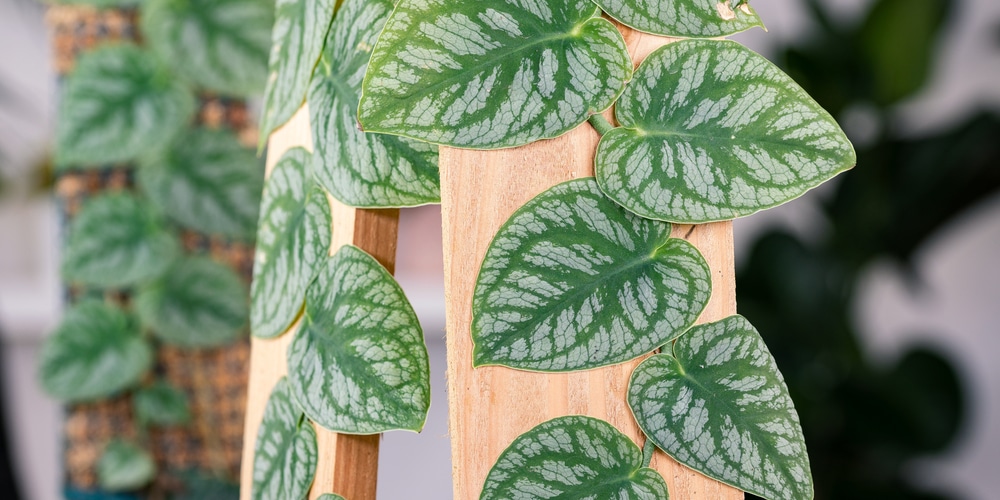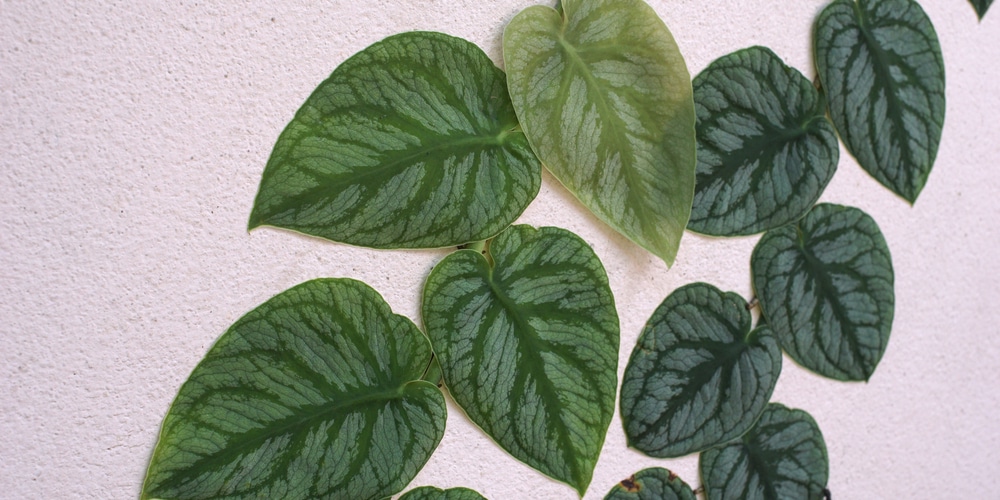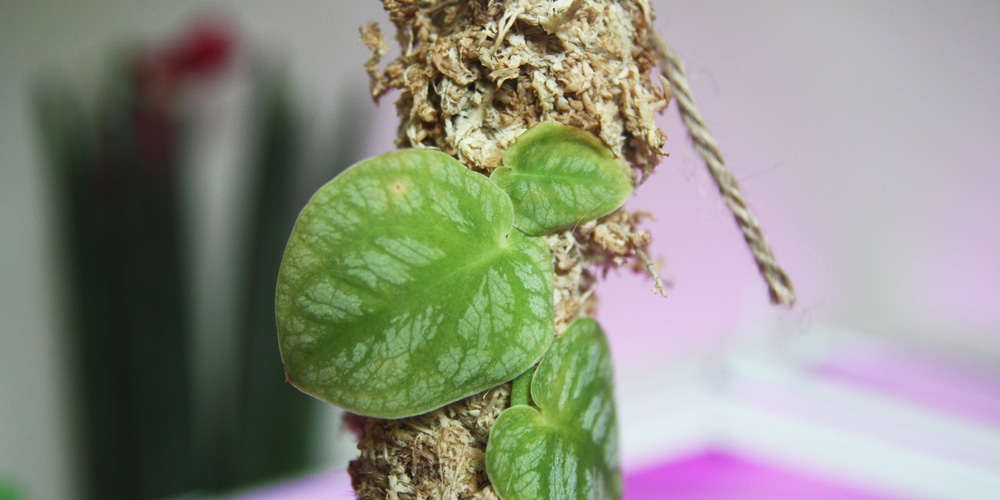Unlike their famous counterparts, Monstera Deliciosa and Adansonii, Monstera Dubia is a lesser-known Philodendron species that originates from the tropical rainforests of South America.
Although it’s not as widely cultivated as other Monstera varieties, its heart-shaped leaves, growth habit, and easy-care nature make it a plant that’s well worth seeking out.
In their native habitat, these plants are considered to be seeking vines, usually attaching themselves to other trees or plants using their aerial roots. However, when cultivated as a houseplant, they can be trained to grow along a totem, stake, or trellis.
Unfortunately, Monstera Dubia is quite challenging to find for sale. Most garden centers and online plant retailers don’t carry it.
However, if you’re patient and keep your eyes peeled, you may be able to find one for sale at a specialty nursery or through a private collector. Remember to be careful when purchasing plants online. Many unscrupulous sellers may try to pass off a different plant species as Monstera Dubia.
| Botanical Name | Monstera Dubia |
| Common Name | Shingle Plant |
| Plant Type | Perennial |
| Flower Color | Pink |
| Size When Mature | 36 – 120 inches |
| Bloom Time | Spring to Summer |
| Sun Requirements | Partial Sun |
| USDA Hardiness Zones | 9 – 11 |
| Soil PH Range | 5.5 – 6.5 |
| Soil Type | Moist but well-draining, loamy, acidic soil |
| Water Needs | Low |
| Native Area | Central and South America |
What You Need to Know About Monstera Dubia
Despite looking different from the Monstera Deliciosa, caring for Monstera Dubia is very similar. With its deep green foliage hanging from support, this fast-growing plant can quickly become a focal point in any room.
Its leaves perfectly strike a vibrant green contrast when placed on a wooden post. Although flat, this plant’s leaves have an attractive quilted appearance, making it stand out from other plants in its family. This epiphyte loves to climb, and part of taking care of it involves training it to grow along with support.
Monstera Dubia can tolerate a wide range of growing conditions, making it an ideal plant for beginners. Take note, however, as this plant may sometimes be considered toxic to pets. If you have cats or dogs prone to nibbling on your plants, it’s best to keep them away from Monstera Dubia.
While they’re not grown for their flowers, these plants sometimes bloom pink or white blooms during the spring and summer. The flowers are inconspicuous and don’t have any ornamental value.
How to Care for Monstera Dubia
Here’s everything you need to know about growing and caring for a thriving Monstera Dubia:
Light
In the wild, you can find Monstera Dubias underneath forest canopies. When grown indoors, dappled sunlight is ideal, but it can also tolerate low-light conditions.
Bright yet indirect light is what this plant needs to thrive. Overexposure to sunlight may lead to scorched leaves, so be careful not to place them in an area that gets direct sunlight.
Otherwise, if you notice the leaves start to yellow, that’s a sign that it’s not getting enough light. Move the plant to a brighter spot.
Water and Soil Needs
Monstera Dubia is all about moisture and humidity. Despite their tropical origins, these plants are pretty tolerant of a range of watering regimes.
When it comes to watering, the general rule is to water this plant approximately every 10 days. This is when the top soil is dry. Take a stick or use your finger to check the moisture level of the soil before watering.
Surprisingly, this plant takes neglect quite well. So, if you’re forgetful or busy, it’s not the end of the world if you forget to water it for a week or so. While they’ll thrive, avoid getting the plants completely dry often, as this will lead to leaf-drop.
To know if your plant needs more water, pay attention to its leaves. If they start to droop, that’s usually a sign that it needs to be watered. Giving it a deep soak will usually perk the leaves back up again.
As for the soil, a well-draining potting mix that’s acidic or highly acidic is ideal. Again, it can tolerate a wide range of soil conditions, but if you want to keep your Dubia’s leaves lush and vibrant, keep them within the range of 5.5 – 6.5.
Temperature Requirements
Monstera Dubias like warm climates and won’t do well in temperatures that dip below 50 degrees Fahrenheit. They love the humidity, so if the air in your home is too dry, consider placing a humidifier near the plant.
In general, a home’s humidity levels will suffice, but if you live in an area with dry winters, the indoor humidity levels may drop too low for your Monstera Dubia. If that’s the case, you can raise the humidity around your plant by grouping it with other plants or by placing it on a pebble-filled tray filled with water.
Hardy in zones 9 – 11, these plants will suffer in colder climates. Heat stress is also something to be aware of. If the temperatures in your home or area get too hot, the leaves may start to brown and drop off.
Fertilizer
The best fertilizer for Monstera Dubia is a slow-release fertilizer. Do this 2-3 times a year, paired with a half-diluted 10-10-10 fertilizer monthly. If you want to use organic fertilizer, composted manure is ideal. If the leaves start to yellow or if growth starts to stall, that’s usually a sign that the plant needs more nutrients.
Common Diseases
Like the majority of plants, root rot is one of the most common problems one may experience when caring for Monstera Dubia. This often happens with poor watering management. Overly compacted soil is as bad as over watering your plant, as it doesn’t allow the roots to breathe.
The common brown scales and red spider mites are also problems that could attack your Monstera Dubia. These pests are drawn to humid conditions, so make sure the leaves of your plant are always dry. Misting can be done occasionally; just ensure not to do it too often.
Monstera Dubia Propagation
Stem cuttings are the easiest and fastest way to propagate Monstera Dubia. Similar to the method you’d use when propagating other Monstera varieties, take a stem cutting that has at least 2-3 leaves on it.
Using a clean knife (as always), take a stem just right below a node (the part of the stem where the leaves are attached). Dip that stem in water for it to take root. Ensure to place your cuttings in their preferred light conditions – dappled, but bright sunlight.
Carefully monitor your cutting’s roots. Wait for the roots to grow at least once an inch long before transferring to a pot with well-draining soil. Remember to keep the soil moist during this time. This is to avoid transplant shock. Wait for it to grow to about 6 inches before transferring it to a bigger pot.



